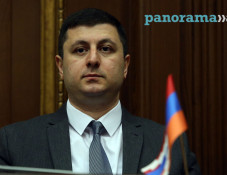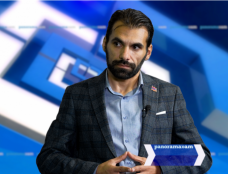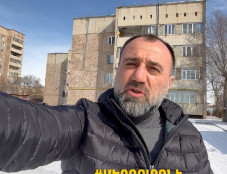
Pavel Avetisyan: Excavations are unique in Armenia in terms of replication of the past of the whole region
Over the recent years archaeological and field studies have reached an unprecedented level in terms of both quality and quantity, Director of Institute of Archeology and Ethnography of National Academy of Sciences of Armenia, Dr. Pavel Avetisyan told reporters at a meeting on March 31.
To him, 24 programs were completed over last year comprising mostly excavation, field research and cartographic works.
“Items, which are discovered and excavated over the course of studies, are of unique significance both for the replication of the ancient past in the Armenian Highlands and the whole region. We have excavated monuments which contain data providing different perspectives about the transition stages of the earth population,” he said.
P.Avetisyan singled out the excavation works conducted in archaeological sites of the Stone Age in Nor Gegh located in the Hrazdan Canyon, a monument, which is 300-350 thousand years old.
“That represents important data about principles and perceptions of the population dispersal around the planet. Previous contentions said that early Homo sapiens originated from the territory of Africa with later dispersal to other parts of the planet. Excavations of Nor Gegh archaeological areas revealed that early Homo sapience originated not only from Africa but other parts of the planet.”
Director of Institute of Archeology and Ethnography suggests that important results were received during the excavations of the monuments in the Ararat valley, that represent an example of early agricultural culture. Excavations, he says, opened new layers, which may date back to the 7th century B.C.
“This is notable as two or three settlements dating to the 7th century B.C. have been excavated in Armenia. One version suggested that no people resided for the indicated period in the area concerned due to climate conditions. Similar monument is being excavated in Masis Hill. Talks around these monuments have crossed the Armenian borders and are subject to discussions among international scientific circles,” he said.
Pavel Sargsyan said the excavations were mainly carried out within joint programs through involvement of international specialist. About 16-20 programs are implemented annually in collaboration with representatives of European, US scientific institutions, which provide an opportunity to conduct necessary analysis in the European and American laboratories.
Avetisyan next informed that Dashtadem fortress renovation works are underway.
In 2015 they excavated the throne site of the Father. Avetisyan says such sites are not common in Armenia and serve a unique example to learn about the Middle Ages.
Newsfeed
Videos






























